As you know we’re testing the Maxspect Ethereal on Jonathan‘s aquarium. Three ceiling lights are illuminating an aquarium 160 x 80 x 50 cm (170 gallons).
Here is our current analysis; we will be following up with an additional review once we have collected more information about its daily use and
Technical characteristics of the Maxspect Ethereal
LED channels:
There are five channels that can be individually managed, which means thatthere are many types of led that are controlled together.
- Channel A – Cool White (Group 1 – 6,500K Cool White, Group 2 – 460nm Blue);
- Channel B – White (Group 1 – 4,500K Neutral White, Group 2 – 2,700K Warm White);
- Channel C – Blue (Group 1 – 465nm Cool Blue, Group 2 – 485nm Ultramarine Blue);
- Channel D – Royal Blue (Group 1 – 445nm Royal Blue, Group 2 – 460nm Blue);
- Channel E – Super attinic (Group 1 – 405nm UV, Group 2 – 425nm Super Actinic).
Dimensions:
- Length: 30 cm
- Width: 24 cm
- Thickness: 2.5 cm
Maximum declared consumption for a single ceiling light: 130 watt (150 VA)
Declared light intensity : 450~600 PAR at 30 cm from the ceiling light
Selling price: 500 euro ($532 USD) Vat included
Construction
The Maxspect Ethereal is well-built, with a remarkable design; they are small, lightweight, and have an adjustable support for the glass. There’s a noticeable difference between these lights and the Philips CoralCare, recently reviewed on this site (article). The Maxspect ceiling lights are passively cooled by a very quiet fan, regulated by an inner thermostat.
The programming
The programming software can be used only by smartphone and tablet, and it works with the (optional) control module ICV6. You have to download a free app to create curves for its use during the day. As you can see from the curve we’re using, we have divided the 5 channels, in different hours, by the switch on and switch off and for a slow dimming.
We like the factory’s programming, where the light’s curve has all the channels at 100%, besides channel B, which is set at 70%.
Technically there aren’t lunar phases but it’s possible to create a nocturne halo with the fan illumination. It can be set on many different colors and intensities, and works quite well.
The programming is extremely simple, though a bit laborious, because for each point (hour) it’s necessary to define the specific percentage of each of the various channels. The ceiling light will take care of the dimming or brightening of the LEDs between the different set points.
Maxspect Ethereal – our analysis
We conducted measurements with the Seneye Reef system probe that we reviewed a few years ago (we can’t say anything sure about the corals yet). Its software has been recently updated, and can measure lux, PAR, and PUR.
We completed 6 measurements, each one from the center, and 20 cm away from the light. We checked the maximum power expressed by the ceiling light, then the maximum power of each channel (individually taken).
As you can see from the graphic, these are the obtained measurements:
- PAR: 689
- Lux: 25,440
- PUR: 78%
Maxpect itself declares 600 PAR at 30 cm, and our results are in line with that (we registered 689 PAR at 20 cm).
And now the 5 channels individually:
| Channel | Gradation | PAR | LUX | PUR |
| Channel A | Cool White | 118 | 4,381 | 70% |
| Channel B | White | 99 | 3,666 | 61% |
| Channel C | Blue | 107 | 3,969 | 72% |
| Channel D | Royal Blue | 152 | 5,620 | 84% |
| Channel E | Super Actinic | 225 | 8,306 | 89% |
| All the Channels |
689 | 25,440 | 78% |
.
We can see from the chart that the last two channels have the highest PAR and Lux measurements, especially the Super Actinic. And the Super Actinic seems to make no visible light!
We already highlighted that the PAR value is very close to the declared value, but for each channel (and the total of all channels) it is possible to see a small curve, deduced by the resulting spectrum. The colored spectrum under the curve should be the correct spectrum for the coral measurements.
The comparison with the other ceiling lights in the market
We took a look at previous measurements, done on comparable ceiling lights. In particular, we compared the values of the Philips CoralCare (article) and the GNC 466 (review). The Philips registered 1,496 PAR and 55,230 Lux; the GNC, 696 PAR and 25,697 Lux. Considering these data, we have: halved values compared to the Philips, and the same levels as the GNC. A very good result, considering the prices.
| Ceiling light | PAR | LUX | Watt | Price | Lux/watt | € per watt |
| GNC 466 | 696 | 25,697 | 120 | 1,400 € | 214 | 11.7 |
| Philips CoralCare | 1,496 | 55,230 | 190 | 749 € | 291 | 3.9 |
| Maxspect Ethereal | 689 | 25,440 | 130 | 500 € | 196 | 3.8 |
.
The Lux per watt is similar to the GNC, and the range of the surface is lower than the Philips, but it’s a very good option for the price. Its coverage ability is optimal on tough SPS corals in a 50 x 50 cm area.
The comparison with a radion G2 PRO, the newest radion we could test, has a value of 2,117 PAR, 78,049 Lux and a PUR of 72% (at the center of the ceiling light). But remember that the Radions are cluster-type lights, they have higher values at the center of the ceiling light, but they quickly decline as we move away from the center; in comparison, the Maxspect Ethereal, the Philips CoralCare, and the GNC 466 have their LEDs spread on a wider surface, which assures a more uniform coverage.
Consumption
The survey of the instant consumption is possible thanks to the RCE PM60, an instrument that measures the Cos(fi). The result is directly reported in watts.
This is the calculation of the current consumption (the power):
Maxspect Ethereal ceiling light: 126 watt
A value coincident with the declared 130 w (-3%).
We also measured the Cos(fi).
It’s very close to 1, as it should be.
Maintenance costs
The Maxspect Ethereal costs 500 €.
The power is 126 watts, so there’s a cost/watt relationship of about 3,8 € for each watt. The best we’ve ever encountered. In the chart below, you can compare this light with the other ceiling lights we have tested.
| Ceiling light | Price | Consumption | Euro per watt | |
| Maxspect Ethereal | 500 euro | 130 watt | 3,8 euro per watt | |
| Philips Coralcare | 749 euro | 190 watt | 3,9 euro per watt | |
| radion XR30w G2 PRO |
790 euro | 170 watt | 4,7 euro per watt | |
| radion XR30w G4 PRO | 915 euro | 190 watt | 4,8 euro per watt | |
| OceanLed Sunrise 600 | 870 euro | 180 watt | 4,8 euro per watt | |
| radion XR30w G2 | 690 euro | 140 watt | 4,9 euro per watt | |
| radion XR30w G4 | 760 euro | 150 watt | 5,1 euro per watt | |
| Zetlight UFO ZE-8000 | 500 euro | 96 watt | 5,2 euro per watt | |
| CEAB Slide & Led | 2,700 euro | 275 watt | 9,8 euro per watt | |
| sicce GNC 466 | 1,592 euro | 120 watt | 13,3 euro per watt |
This ceiling light impressed us with its appearance and its quality illumination. We’re currently testing it in real conditions to see how it behaves with corals.
Partial conclusions
We can’t write proper conclusions because we haven’t yet completed the test on our aquarium, but we can report on what we have observed so far.
The ceiling light is well built, thin and lightweight, and it has the best price per watt of the category. It’s stylistically modern and captivating, and the light distribution seems optimal. Right now we’re using three of them to light up a 160 x 80 x 50 aquarium, and we think a fourth would be unnecessary (we’re waiting for the confirmation of these results from the corals).
Simple to program, even if the programming is a little to long to complete.
The specific power is very high and thanks to our measurements we think it could easily handle a 50 x 50 cm surface, or the 60 x 60 cm surface of a cubic aquarium.
We will talk about it again, but if you have any questions, we’re available.
[translated by Agnese Poggi]

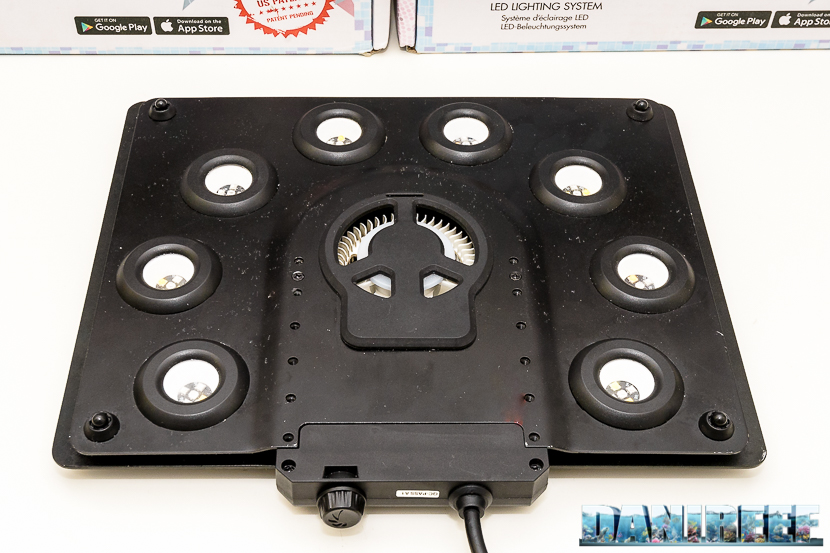
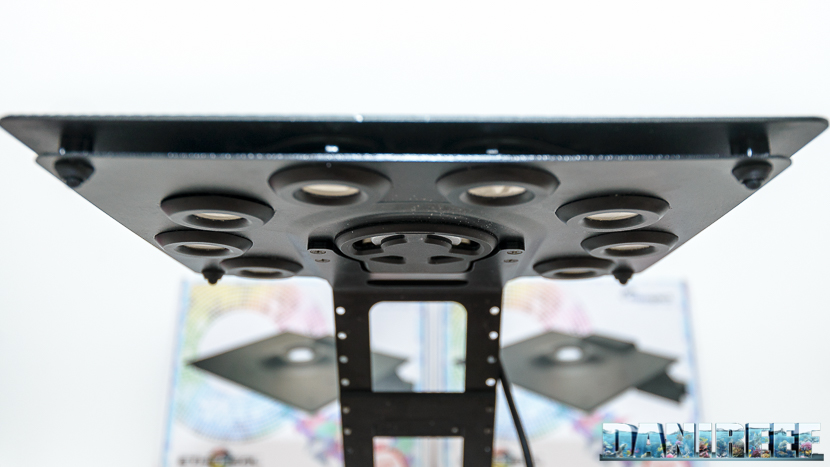
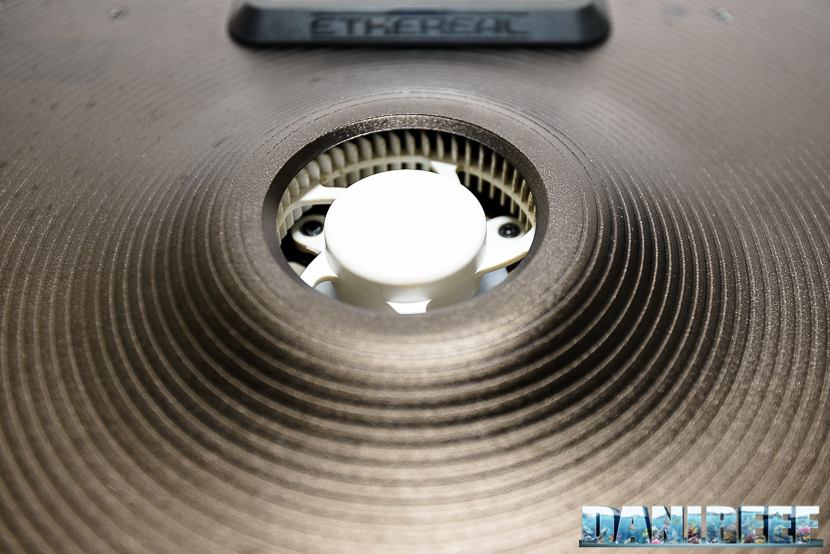
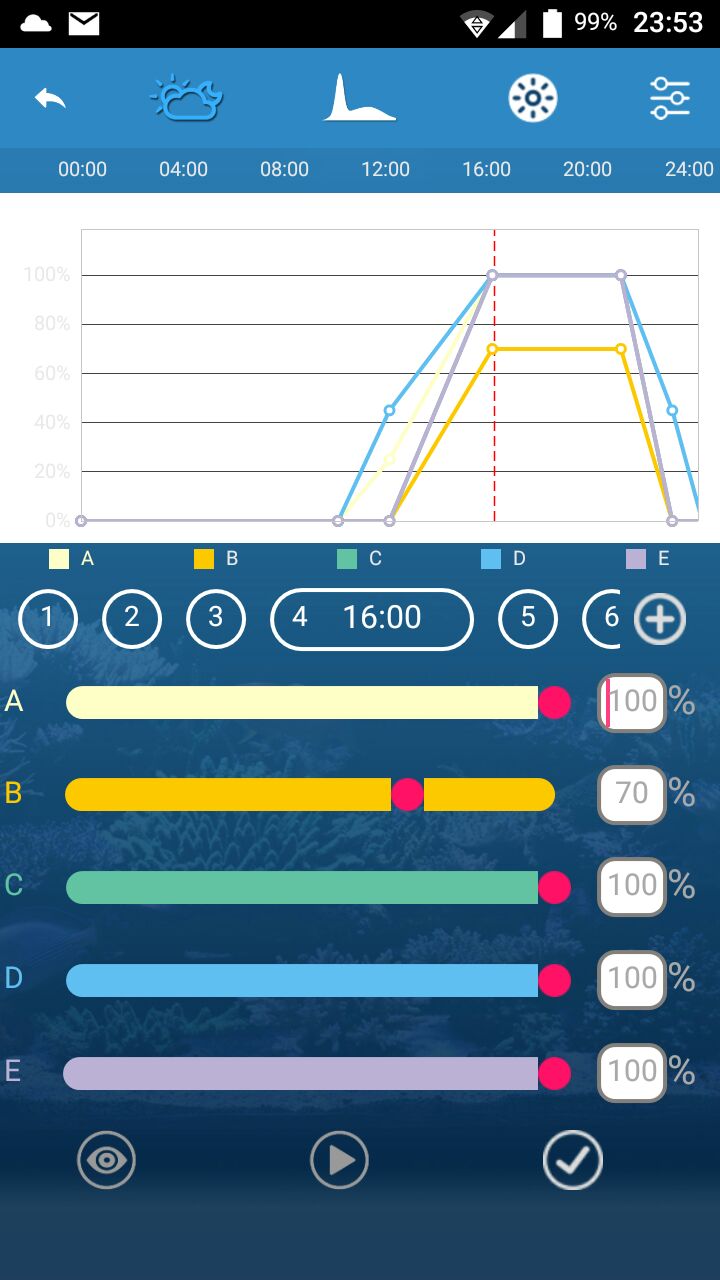
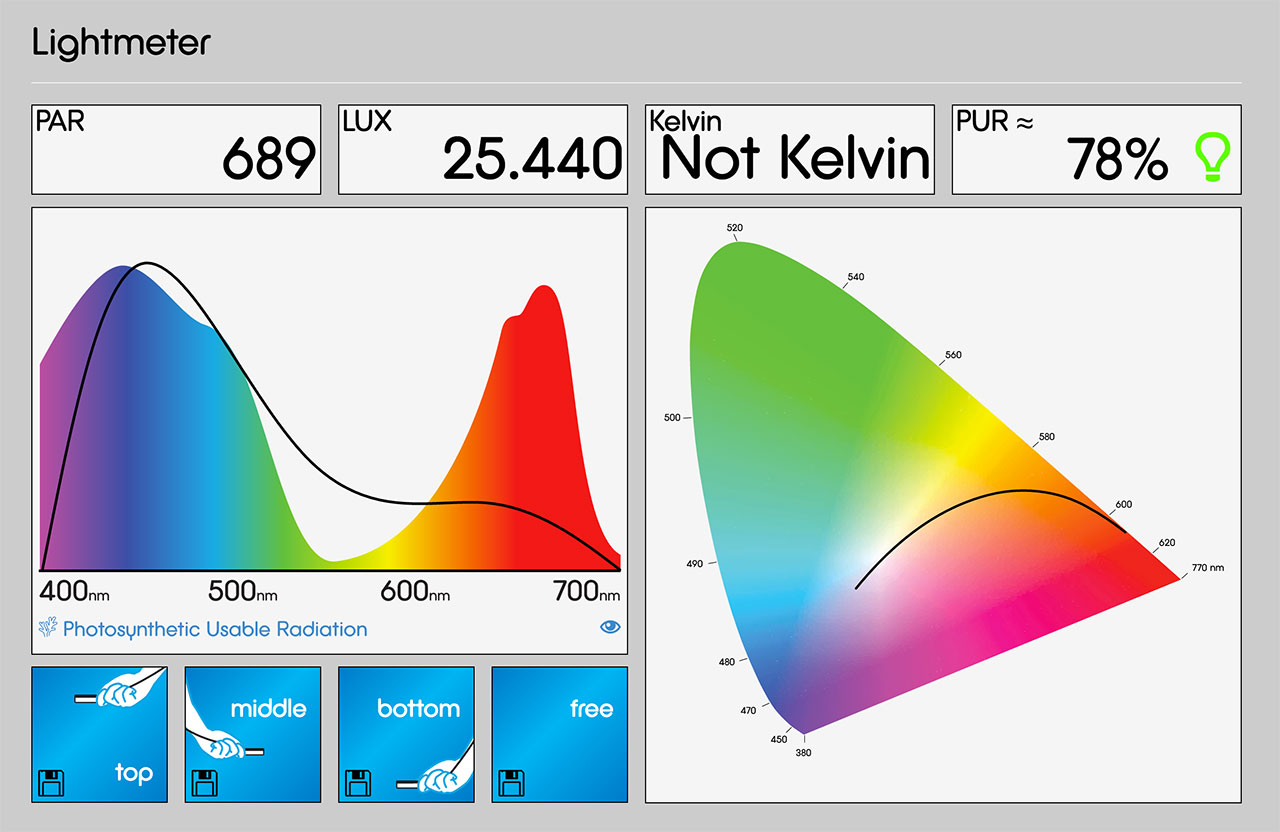
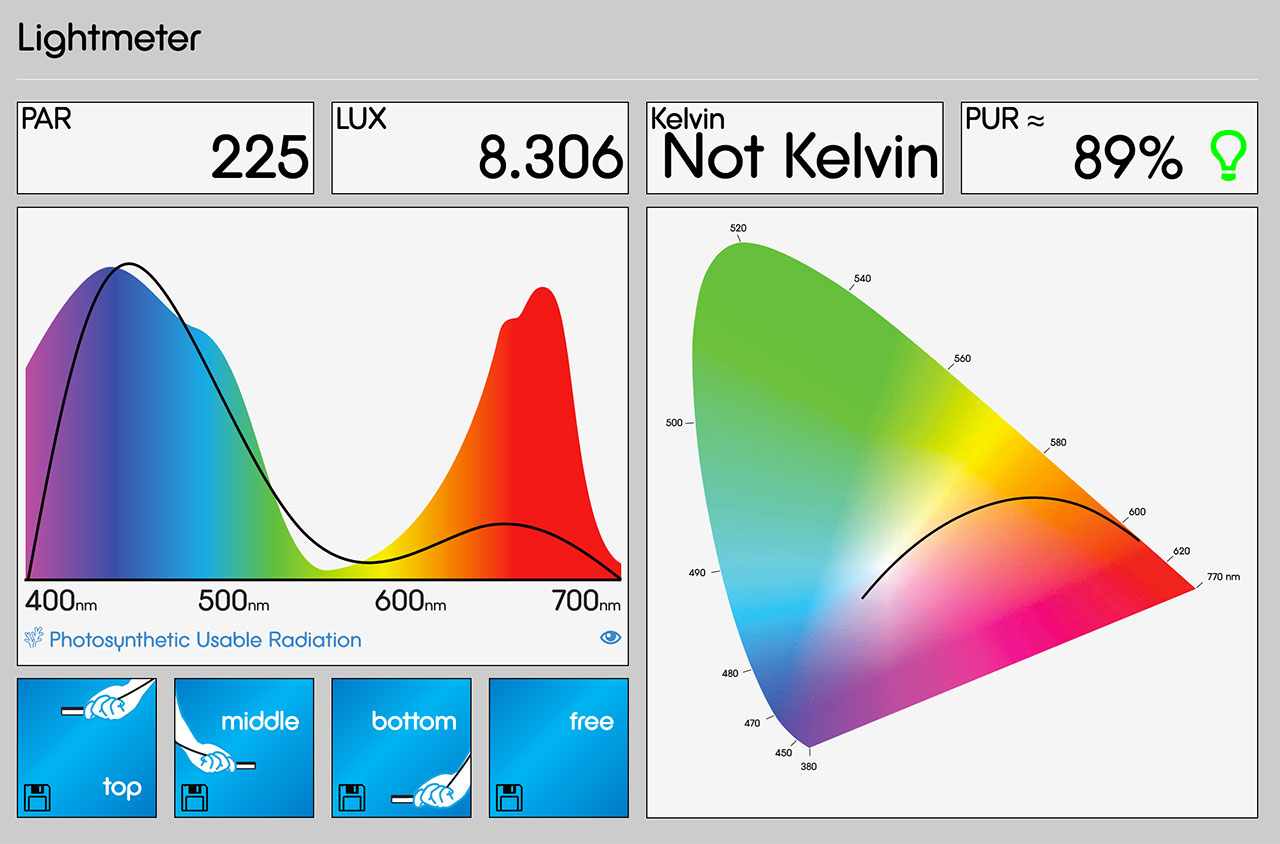
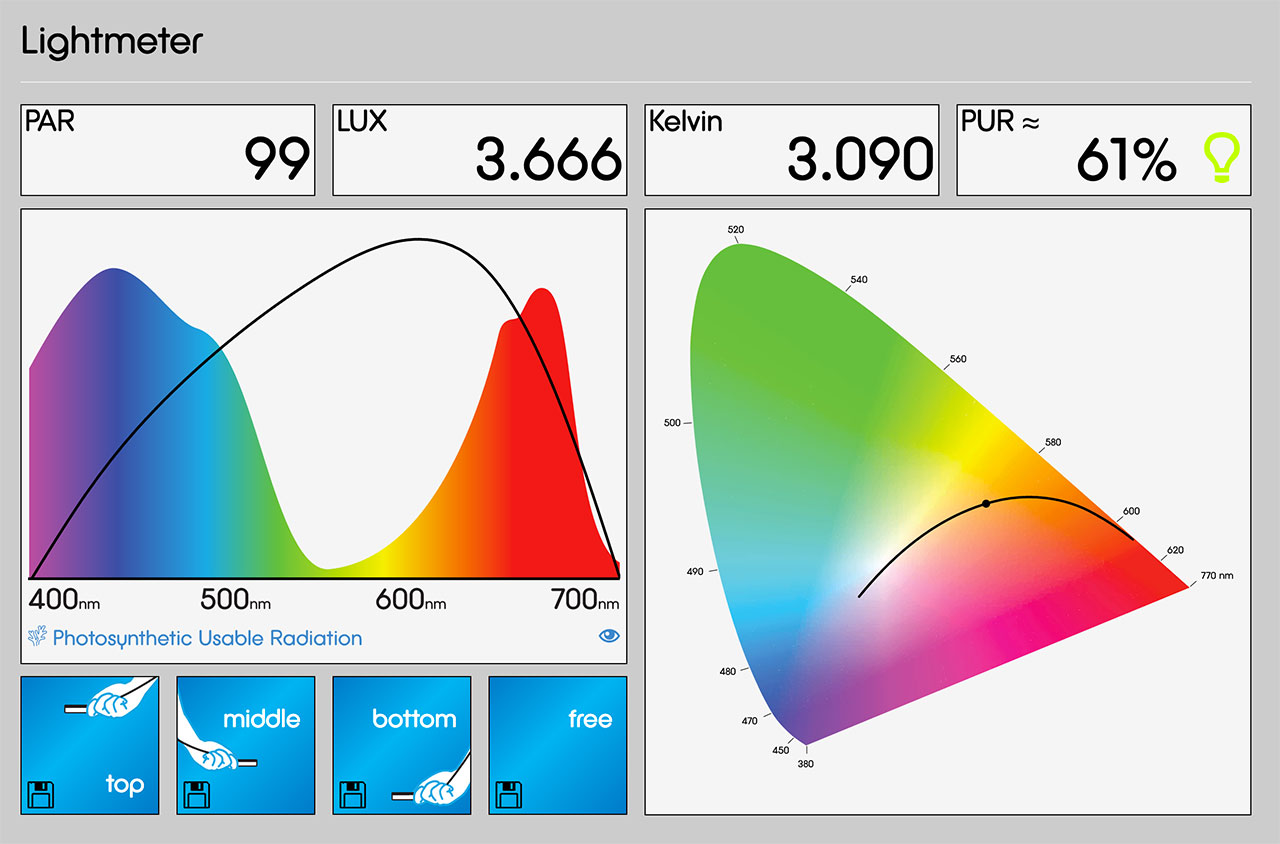
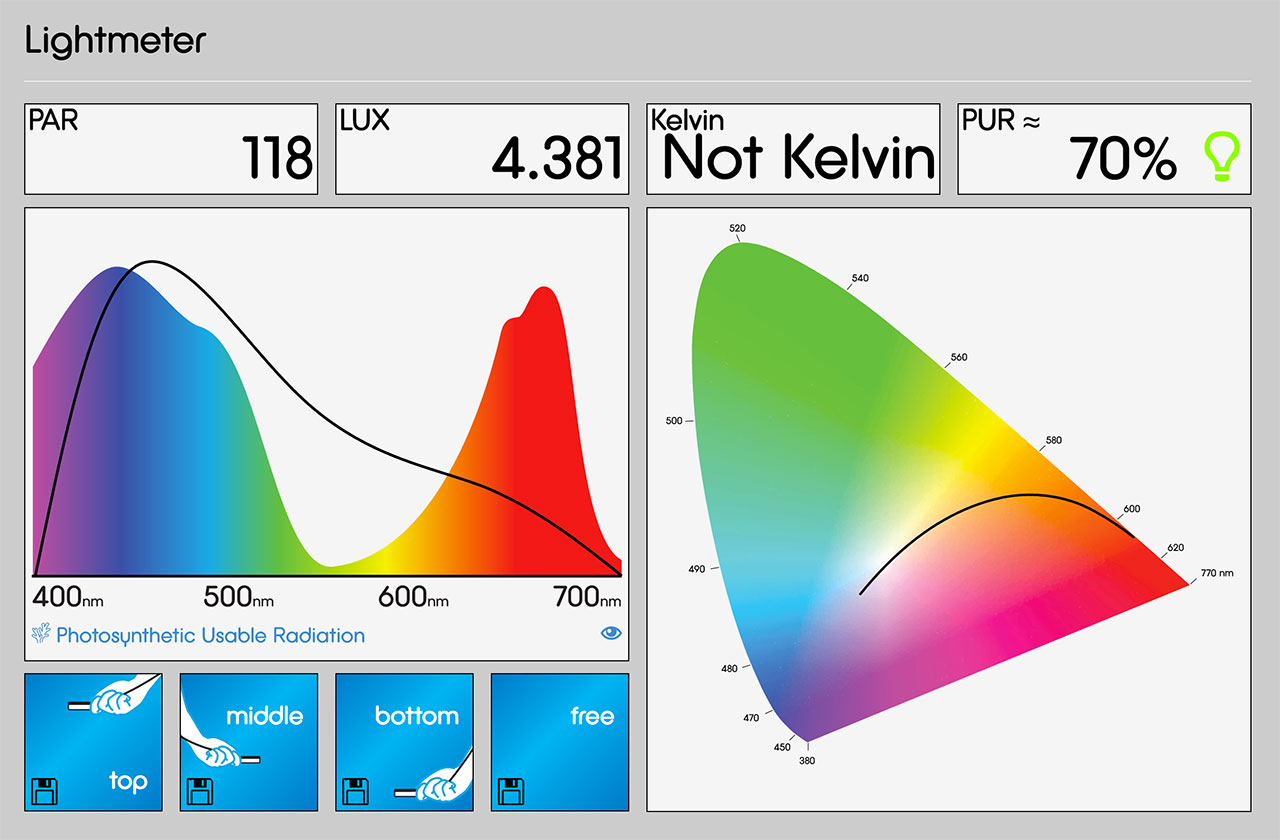
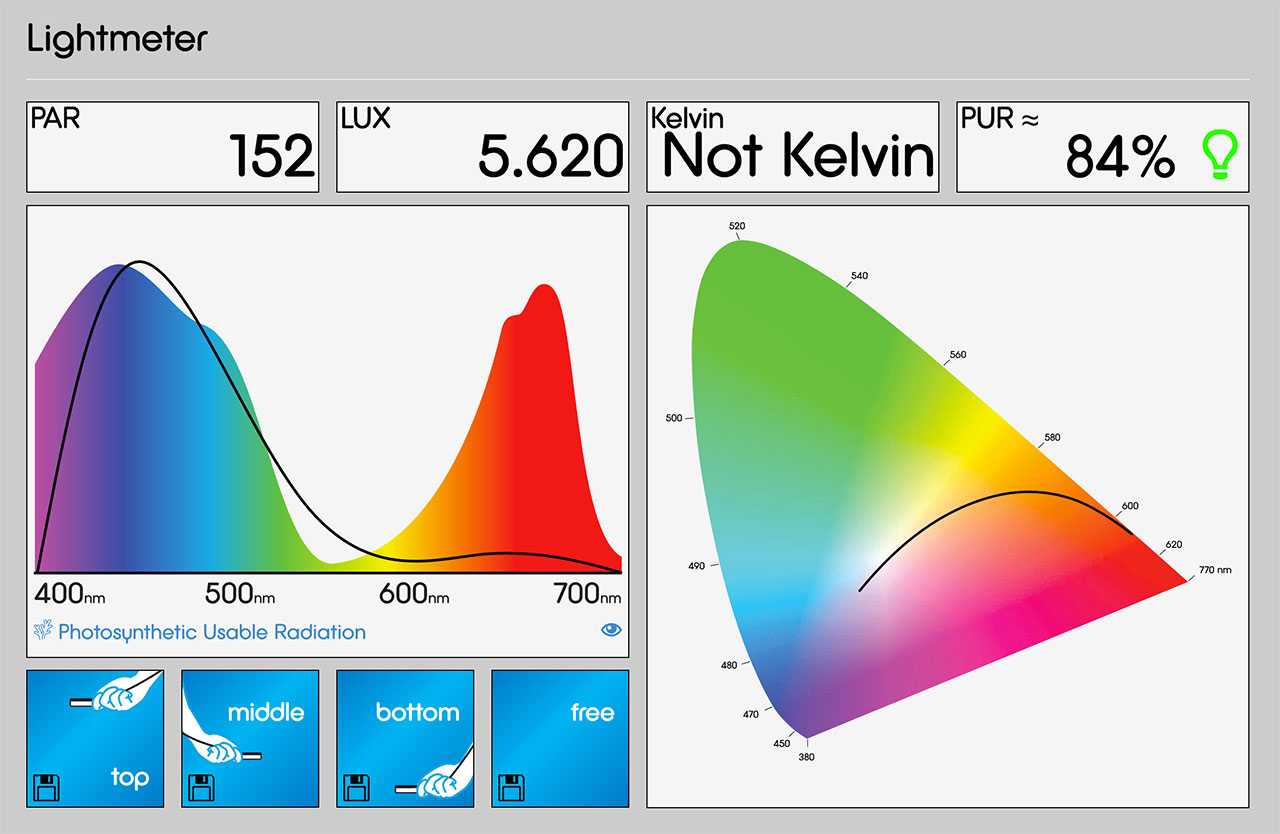
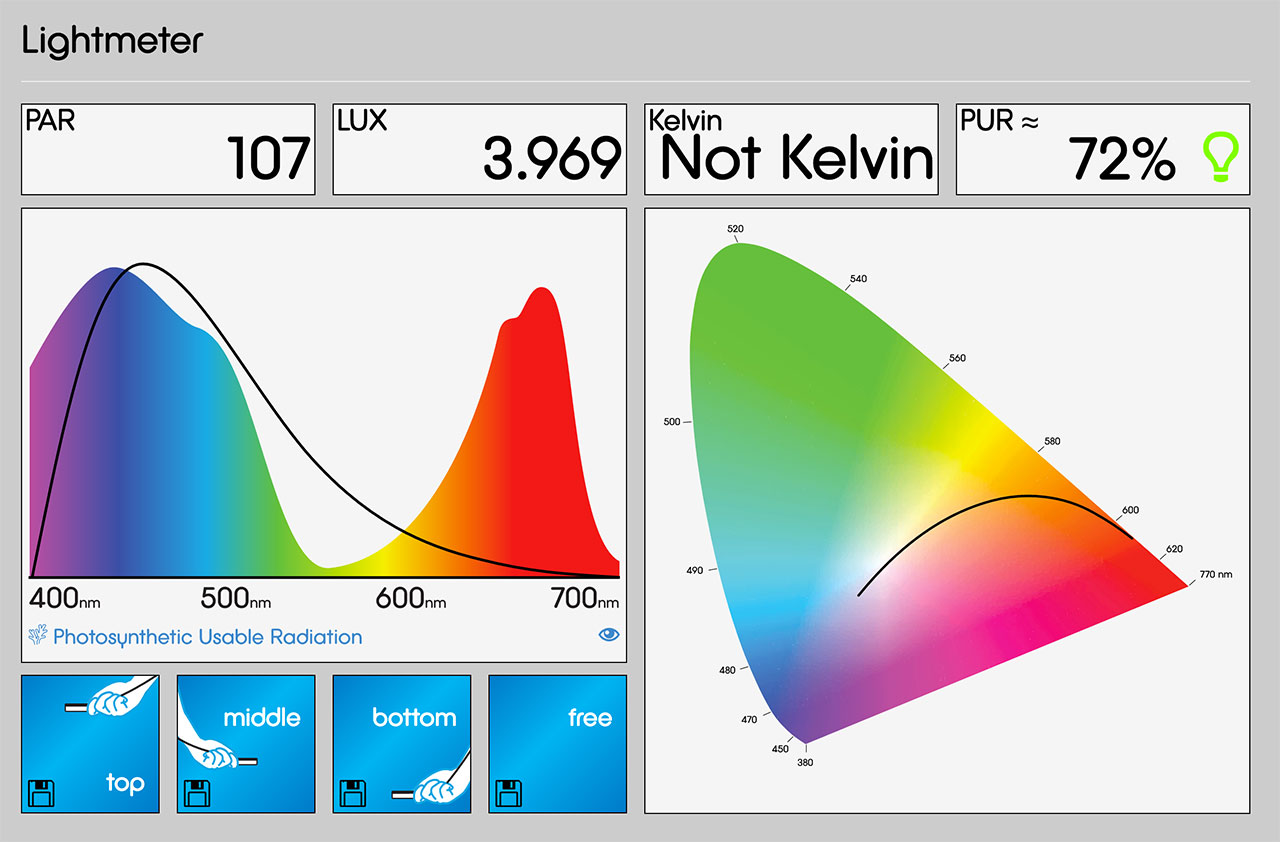
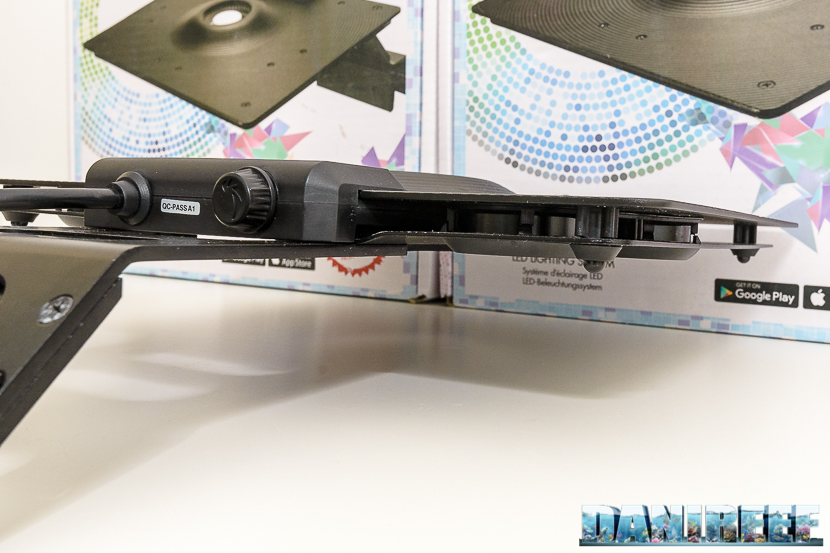
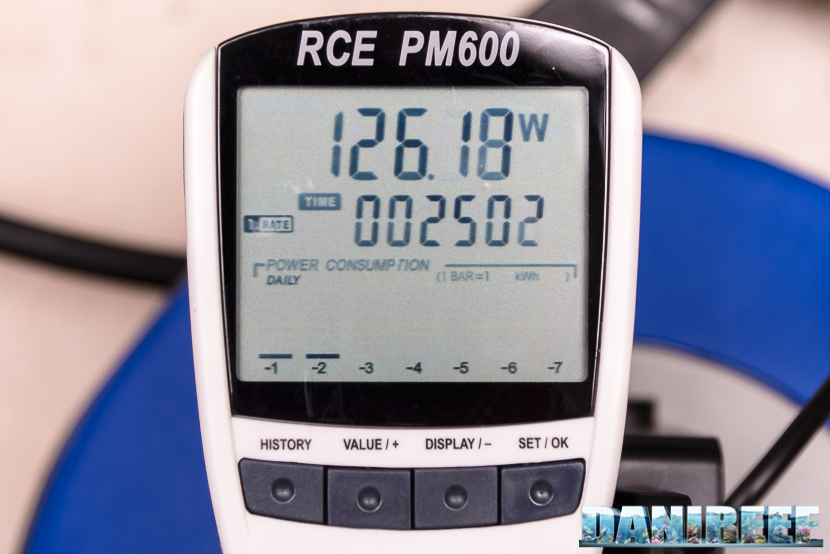
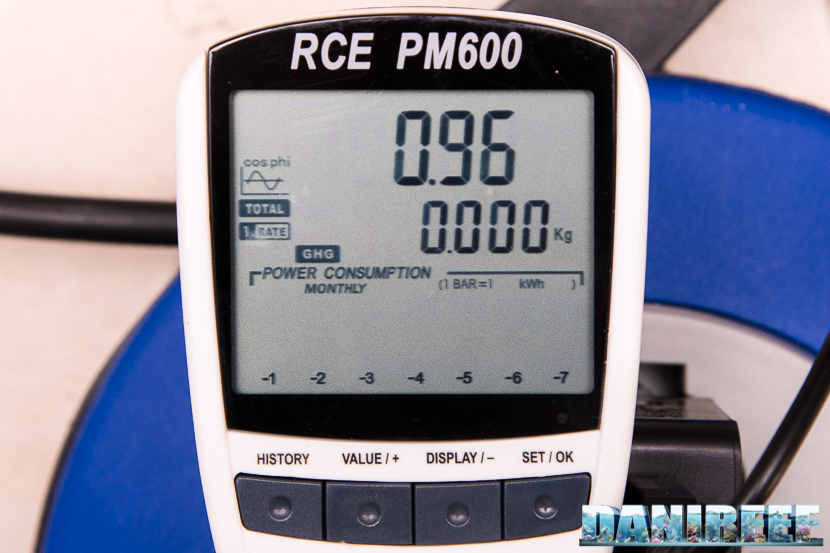
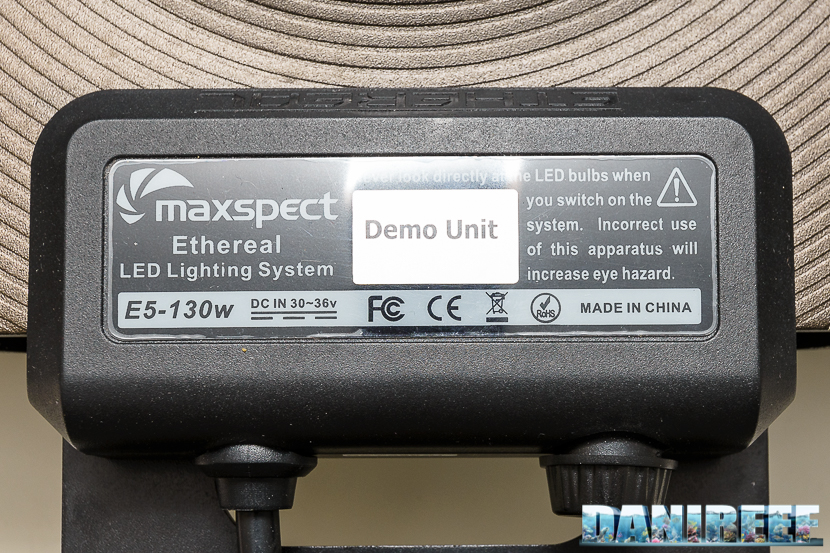
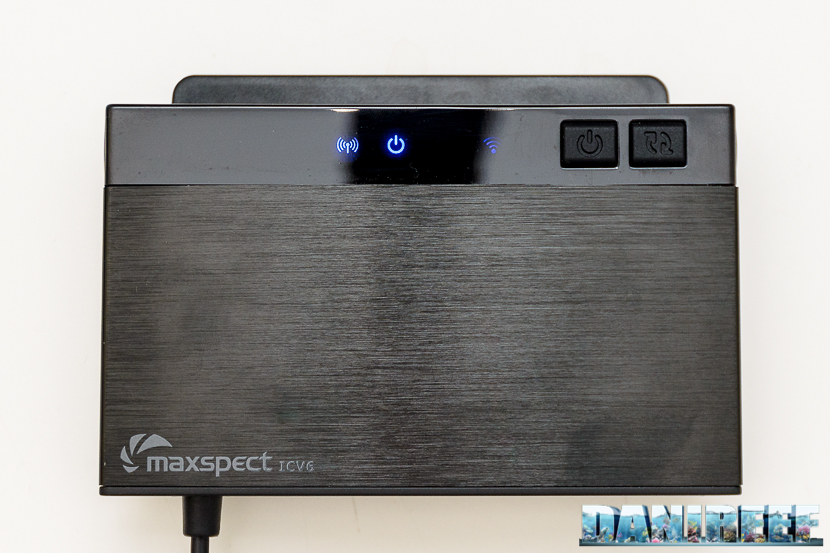








Hi I was wondering if you have any follow up to how this light preformed over time
Hi Matthew, I think the light was very good, albeit not so much strong. The problem we had was more about the reliability, we had some problem in too many lamps.